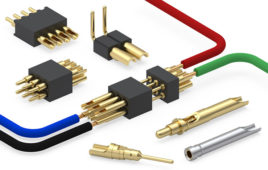Written by Jody Muelaner

A combi head screw is a mechanical fastener with a head that’s designed to engage with more than one type of driver.
Combi head screws, also called combination head or combo head screws, are externally threaded fasteners with torquing heads. They feature a socket designed to engage with two or more types of internal drivers.
These are not to be confused with combi screws, which are fasteners designed for more than one application.
Combi head screws are designed to increase the chance of having a suitable driver available with which to tighten or loosen the fastener. Combi head screws are commonly available in drive combinations including:
- Slotted and Phillips
- Slotted and Robertson
- Phillips and Robertson
- Torx and Robertson
- Slotted, Pozidriv, and slotted
- Phillips and Robertson
Furniture handles and knobs are often attached with truss head or modified truss head screws with combi heads featuring slotted and Phillips sockets. Since handles and knobs can work loose over time, providing combi head screws increases the chances that the end-user will own a tool capable of tightening the component. Therefore, there’s a reduction in callbacks for kitchen fitting companies.
The benefits of these components is that they save time in searching for the correct tool and reduce the number of tools required to be carried. Combi head screws are frequently employed in electrical equipment, such as terminals, plugs, and sockets.Common head combinations are slotted and Robertson, slotted and Phillips, and in the UK, slotted and Pozidriv.
Although originally designed to facilitate a range of drivers and a reduced number of drivers an engineer needs to carry, combi head screws have resulted in a greater range of drivers available on the market.
Due to the low-torque capabilities of the screws, electrically insulated drivers have been produced with interfaces matched to combi head screw variations typically used in switchgear. These hybrid drivers reduce slip-off and resultant damage to screw heads without applying excessive perpendicular force and potentially damaging components.
ECX, made by the popular tool brand Milwaukee, is made to interface with combi screw heads with slotted and Robertson recesses. Drivers designed for combi head screws with either Phillips and slotted, or Pozidriv and slotted, are known as Plus/Minus drivers.
Screws can also have a combination of internal and external drive options — such as slotted hex head screws, which are commonly used to secure license plates.
Slotted thumbscrews, are commonly used on computer cases, enabling rapid assembly during production through mechanized driving combined with a tool-less access solution for the consumer.





Tell Us What You Think!